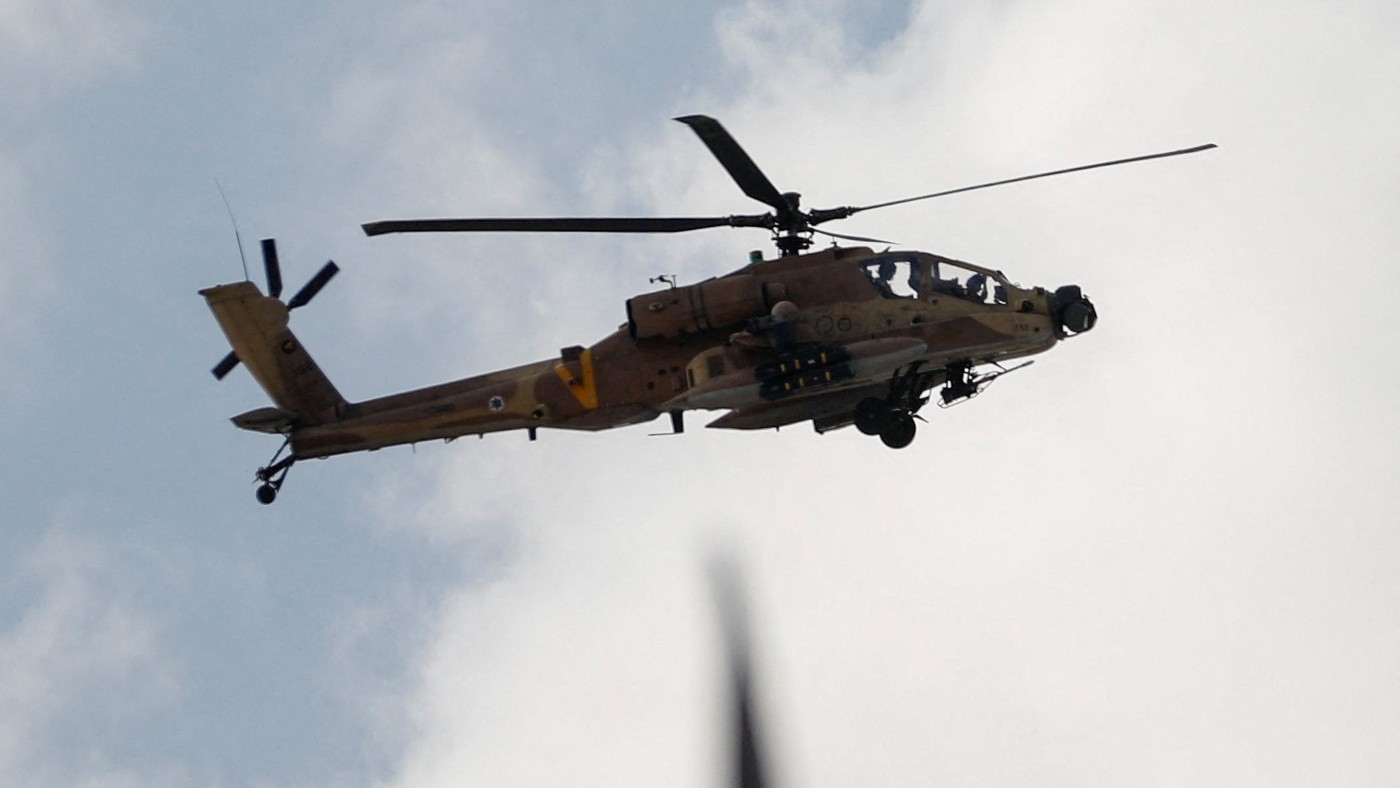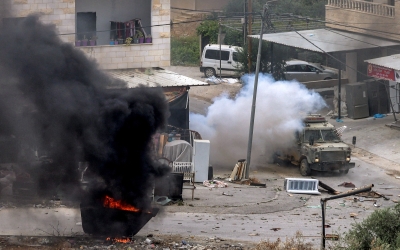Israel uses Apache helicopter fire in West Bank for first time since 2002

Israel used Apache attack helicopters in the occupied West Bank for the first time in over 20 years during its Monday morning raid on Jenin, which killed at least five Palestinians and wounded 91.
An Israeli military spokesman said that after a Panther troop carrier was hit by an “unusual and dramatic” improvised explosive device (IED) fired by Palestinian fighters, an Apache helicopter gunship fired in support of Israeli commandos.
The use of the US helicopter, made by aerospace company Boeing, is significant because of the heavy ordinance it carries and because Israeli Apaches are not believed to have fired missiles inside of the occupied West Bank since 2002, during the days of the Second Intifada.
While Israel regularly launches air strikes on Gaza, the use of heavily armed attack helicopters in what is essentially a residential zone is a profound sign of increased Israeli military aggression.
The security situation in the occupied West Bank has been deteriorating for some time, with Israel launching repeated incursions into Jenin over the last year. At least eight Israeli soldiers are believed to have been wounded in Monday morning’s raid, which went on for several hours.
New MEE newsletter: Jerusalem Dispatch
Sign up to get the latest insights and analysis on Israel-Palestine, alongside Turkey Unpacked and other MEE newsletters
The declared aim of the raid was to arrest 36-year-old Hamas activist, Assem Abu al-Haija, from the Jabriyat neighbourhood on the outskirts of the northern West Bank city.
Videos from the Jenin refugee camp showed an attack helicopter firing flares, prompting speculation that Palestinian fighters there had acquired shoulder-launch anti-aircraft missiles.
'Heavy memories'
Wafa Jarrar, a Palestinian resident of the Jenin refugee camp, told Middle East Eye that her cousin had been killed in an Israeli air attack there in February 2002.
“What happened today is not easy for all the residents of Jenin and of course for those who lost family members,” she said. “It brings with it heavy memories from 20 years ago. It’s not easy at all, not on a psychological level and not on an emotional level.”
Apache helicopters were used by Israel in the West Bank on at least four occasions during 2002.
'Today, we remember the disaster of those horrible days'
- Wafa Jarrar, Jenin resident
Survivors of an attack on 6 April 2002 described how they could tell they knew the fire came from Apache helicopters “because we could see the wires” guiding the missile.
One victim of that attack, a woman with a learning disability, was hit by a missile from an Apache helicopter fired directly into her top-floor room in a building. The building was occupied only by civilians.
Jarrar told MEE that Monday’s raid and the use of attack helicopters had brought back memories of being targeted by Israeli air raids.
“Today, by attacking us from the air, they try to break the resistance in Jenin,” she said.
This, she said, was an echo of the aerial strikes carried out in 2002, when the Israeli army sought to target the leadership of armed Palestinian resistance groups. “The amount of destruction was huge, entire neighbourhoods were destroyed,” Jarrar told MEE.
'Flying tank'
The Apache helicopter entered service with the United States Army in 1984 and has been exported to a series of countries worldwide, including Egypt, Saudi Arabia, Morocco, Qatar, the United Arab Emirates, the UK and Israel.
It has been described as "the most lethal helicopter ever created", a "flying tank... designed to survive heavy attack and inflict massive damage".
The chopper was first used in military combat as part of the US invasion of Panama in 1989.
The Apache AH-64D Longbow was deployed by the US in Afghanistan and Iraq, and the aircraft has been used by the Americans in Kosovo, Bosnia, and Turkey. The British and Dutch also used the helicopters in Afghanistan and Iraq.
In 2021, as Kabul fell to the Taliban, the US used Apache choppers to disperse crowds.
Israel received its first Apache helicopters in the early 1990s. The combat aircraft were received by Squadron 113, the “Wasp” squadron that carried out the assassination of Hezbollah leader Abbas Mousavi in 1992.
Israel went on to use Apache helicopters extensively in Gaza and Lebanon and in the occupied West Bank during the Second Intifada.
'Only the beginning'
Today, the Israeli Air Force operates two Apache squadrons, with the “Wasp” squadron using model D Longbow helicopters and the “Patan” squadron using model A helicopters.
After more than two decades, the deployment of the choppers in the occupied West Bank is a sign of how far the situation there has escalated.
Israel’s government is reportedly putting serious pressure on security forces to launch an extensive military operation in the northern West Bank.
The army is said to oppose a major operation, but Haaretz has reported that Shin Bet, the security service, is gradually changing its mind.
For residents of the Jenin refugee camp, the presence of attack helicopters in their skies is a terrible sign.
“Today, we remember the disaster of those horrible days,” Jarrar said, recalling the air raids of 2002. “Many people were killed. Many buildings and many businesses were destroyed.”
“Shelling areas in Jenin is only the beginning,” she said. “I believe they will use this policy again very soon.”
Middle East Eye delivers independent and unrivalled coverage and analysis of the Middle East, North Africa and beyond. To learn more about republishing this content and the associated fees, please fill out this form. More about MEE can be found here.





